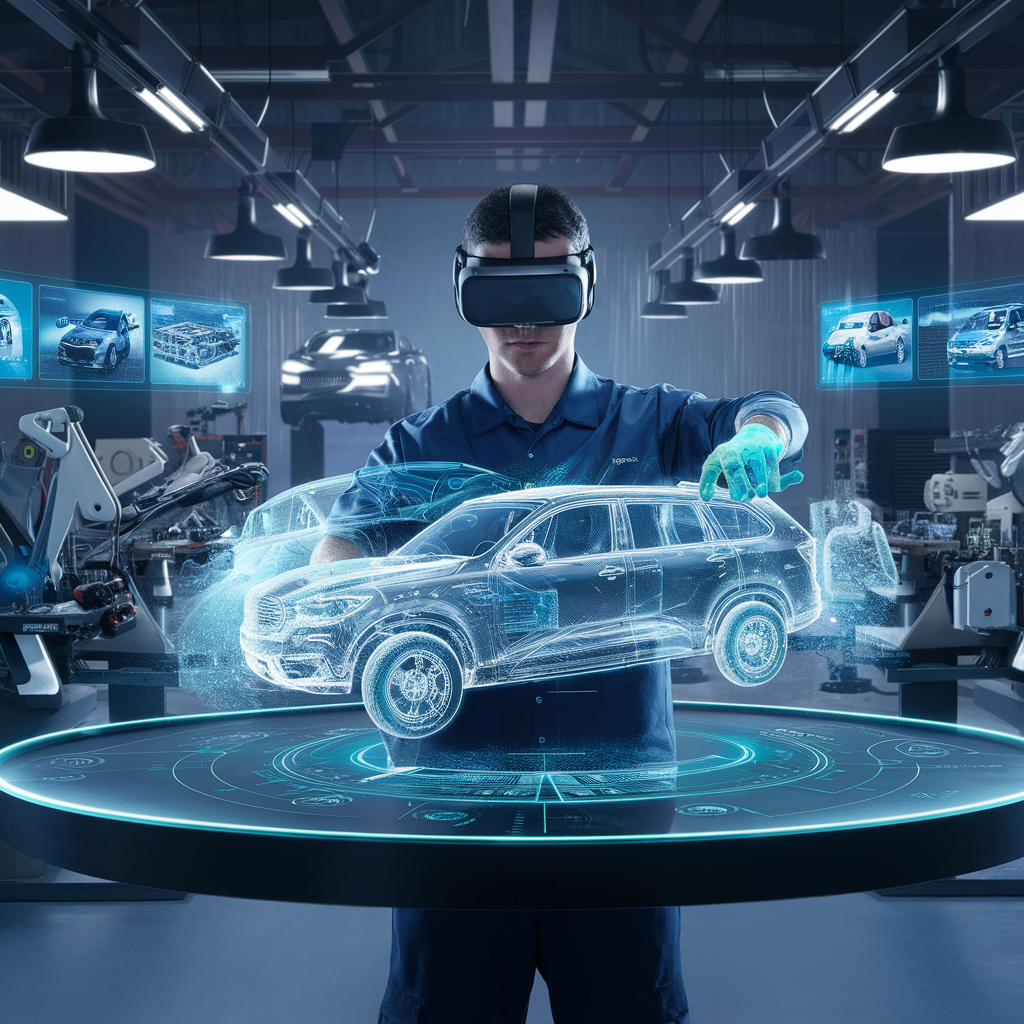In the fast-evolving landscape of automotive technology, virtual reality (VR) and augmented reality (AR) stand poised to revolutionize the way professionals are trained and how maintenance tasks are carried out. As these immersive technologies become more accessible and advanced, their integration into automotive training and maintenance procedures holds the promise of enhancing efficiency, safety, and effectiveness across the industry.

Enhancing Training Through Immersive Experiences
One of the most significant advantages of VR/AR in automotive training lies in their ability to create immersive learning experiences. Traditional training methods often involve textbooks, lectures, and hands-on practice on real vehicles. While these methods are effective to a certain extent, they may fall short in providing comprehensive understanding and practical skills development.
VR trainings offers trainees the opportunity to interact with virtual automotive systems in a realistic environment without the risk of damage to vehicles or equipment. Trainees can explore the intricacies of engine components, electrical systems, and diagnostic procedures in a simulated setting. AR, on the other hand, overlays digital information onto the physical world, allowing trainees to receive real-time guidance and instructions while working on actual vehicles.
By immersing trainees in lifelike scenarios, VR and AR training modules can accelerate learning curves, improve retention of information, and foster better decision-making skills. Moreover, these technologies can be tailored to specific training objectives and skill levels, catering to both novice technicians and experienced professionals.
Streamlining Maintenance Procedures with Augmented Reality
In the realm of automotive maintenance, AR holds the potential to streamline workflows and enhance efficiency. Maintenance technicians often face complex tasks that require referencing technical manuals, schematics, and diagnostic procedures. Traditional methods of accessing this information, such as printed manuals or digital screens, can be cumbersome and time-consuming, leading to delays and errors in the maintenance process.
AR solutions address these challenges by overlaying relevant information directly onto the technician’s field of view through smart glasses or heads-up displays. Imagine a technician wearing AR glasses while performing a diagnostic check on an engine. As they inspect various components, relevant data, such as service manuals, diagnostic codes, and step-by-step instructions, are displayed in real-time, enabling the technician to work hands-free and with greater precision.
Furthermore, AR can facilitate remote assistance, allowing technicians to collaborate with experts located elsewhere in the world. Through live video feeds and AR annotations, remote experts can guide on-site technicians through complex repairs and troubleshooting procedures, reducing downtime and minimizing the need for expensive travel.
Driving Safety and Quality Assurance
Beyond improving efficiency and effectiveness, the integration of VR/AR into automotive training and maintenance also has implications for safety and quality assurance. By providing trainees with realistic simulations of hazardous scenarios, VR training solution can instill safety protocols and emergency procedures in a controlled environment, minimizing the risk of accidents and injuries in real-world situations.”
Similarly, AR-enabled maintenance procedures can ensure that technicians adhere to standardized protocols and best practices, reducing the likelihood of errors and oversights. Digital overlays can highlight critical components, indicate proper torque specifications, and flag potential safety hazards, thereby enhancing the quality and reliability of maintenance work.
The Road Ahead
As VR/AR technologies continue to evolve and become more accessible, their impact on automotive training and maintenance is poised to grow significantly. From immersive training experiences that accelerate learning curves to augmented maintenance procedures that enhance efficiency and safety, these technologies hold the potential to revolutionize the automotive industry.
However, realizing this potential will require collaboration between technology developers, automotive manufacturers, training institutions, and maintenance professionals. By embracing innovation and investing in the adoption of vr automotive training solutions, stakeholders can equip the workforce with the skills and tools needed to navigate the complexities of modern automotive technology, ensuring a safer, more efficient, and more sustainable future for the industry.



